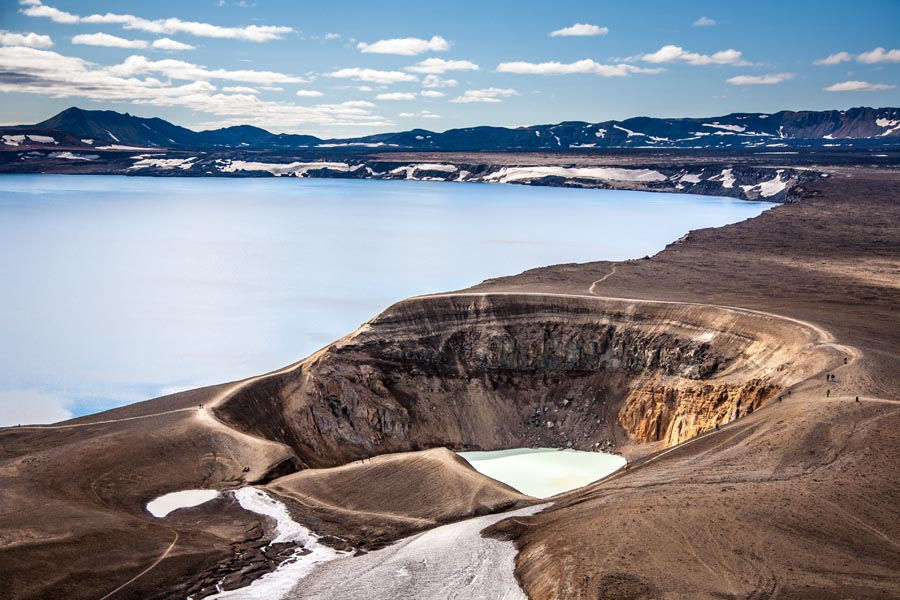CALDERA VOLCANOES
- Scientia Fantastica
- Nov 25, 2017
- 2 min read

Caldera volcanoes are the Extreme Volcanoes. These are the most powerful and catastrophic types of volcanoes in a category by themselves because of the unique way in which they form. This type of volcano is shaped more like an inverse volcano. An enormous magma chamber bulges up beneath the ground from the extremely high pressures of the trapped gases within. Ring-shaped cracks form outward from the magma chamber toward the surface and these act as relief valves for the magma to escape. Once the accumulated pressure has been sufficiently released through a serious of extremely powerful pyroclastic and plinian eruptions, the ground above the magma chamber subsides or caves in, leaving a large depression. Caldera volcanoes are the largest on earth, with some calderas measuring from 15 to 100 kilometers wide
These are the some examples of Caldera Volcanoes:

1.The Yellowstone Caldera is a volcanic caldera and supervolcano in Yellowstone National Park in the Western United States, sometimes referred to as the Yellowstone Supervolcano.
Elevation: 3,142 m
Topo map: USGS Yellowstone National Park
Location: Yellowstone National Park, Wyoming, United States
Mountain range: Rocky Mountains
Parent range: Rocky Mountains
Did you know: The Yellowstone Supervolcano experiences approximately 1000 to 2000 earthquakes a year but most are less than a 3 magnitude.

2.La Garita Caldera is a large volcanic caldera in the San Juan volcanic field in the San Juan Mountains near the town of Creede in southwestern Colorado, United States. It is west of La Garita, Colorado.
Location: Mineral County, Colorado, US, near Creede
Last eruption: 26.3 Ma (Fish Canyon Tuff 27.8 Ma)
Mountain range: San Juan Mountains
Parent range: San Juan Mountains

3.Mount Tambora is an active stratovolcano and the highest mountain on the island of Sumbawa in Indonesia. Sumbawa is flanked to the north and south by colliding oceanic crust in an active subduction zone that created the mountain.
Last eruption: 1967
Elevation: 2,850 m
Prominence: 2,850 m
Location: Sumbawa, Lesser Sunda Islands, Indonesia
Province: West Nusa Tenggara
Did you know: Before the explosion, Tambora was 4,300 m (14,100 ft) high, now it is only 2,722 m (8,930 ft) high.

4.Askja is a caldera situated in a remote part of the central highlands of Iceland. The name Askja refers to a complex of nested calderas within the surrounding Dyngjufjöll mountains, which rise to 1,510 m, askja meaning box or caldera in Icelandic.
Elevation: 1,516 m
Last eruption: 1961
Mountain range: Dyngjufjöll
Parent range: Dyngjufjöll
Did you know: The eruption formed Viti crater.

5.Mount Aso is the largest active volcano in Japan, and is among the largest in the world. It stands in Aso Kujū National Park in Kumamoto Prefecture, on the island of Kyushu. Its peak is 1,592 metres above sea level.
Last eruption: 8 October 2016
Elevation: 1,592 m
Did you know: Aso volcano has produced more explosive eruptions than any other volcano in the world.
Please continue supporting and subscribing our page and website Scientia Fantastica.
Thank you and God bless.
References:
http://www.extremescience.com/calderas.htm
softschools.com
wikipedia.com
volcanolive.com
oregonstate.edu




































Comments